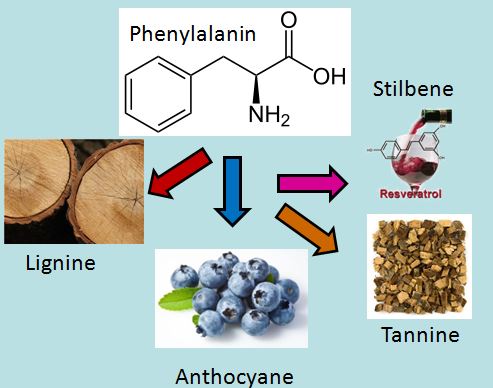Regulation of Anthocyanines
Why it is worth to work on anthocyanins?
Anthocyanins are important quality traits for many fruits since they confer the red colour contributing to high market prices. In addition, they have been recognized as important factors for human health, for instance in the prevention of coronary disease or autoimmunity disorders. The enzymes and regulatory factors of anthocyanin metabolism have been elucidated in great detail for the model fruit grapevine. A key role is played by so called MYB transcription factors that control several key genes of the phenylpropanoid pathway giving rise to several important groups of secondary compounds including lignins, flavonoids, anthocyanins, tannins, and stilbenes. These MYB factors, in turn, are controlled by negative regulators that are under control of different signalling pathways including phytohormonal signalling. Since the regulation and the molecular components seems to be relatively conserved, it is possible to address this pathway using grapevine as model system, and then transfer the results to other plants, for instance apples.
Experimental model: Teinturier grapes
Normally, anthocyanins are produced in the epidermis of leaf and fruits. However, in some mutants of grapevine, anthocyanine formation is deregulated, such that also the inner tissue (for instance the flesh of the berries or the mesophyll of the leaf) is coloured red. These red-fleshed grapes are called Teinturier (Colouring Grapes) in French or Färberrebe in German. They have been traditionally used for the colouring of red wines. This mutation has occurred several times independently in different grape varieties, indicating that it is not so difficult to create a Teinturier Grape. One hypothesis is that one or several of the negative MYB regulators has been affected by these mutations (there are many ways to kill a preexisting function, such as inihbition of anthocyanin synthesis, it is more difficult to create a new function). We are therefore cloning different MYB candidates from Teinturier grapes and their respective non-stained relatives an hope to understand the evolution of these anthocyanin regulators. This is highly relevant for breeding, also in other crops, because one can conclude on molecular traits that are relevant and can be detected by respective markers, which allows to select the right individual of, let us say, an apple tree, already in the seedling stage, such that one does not need to wait many years to see, which type of apples it will carry.

